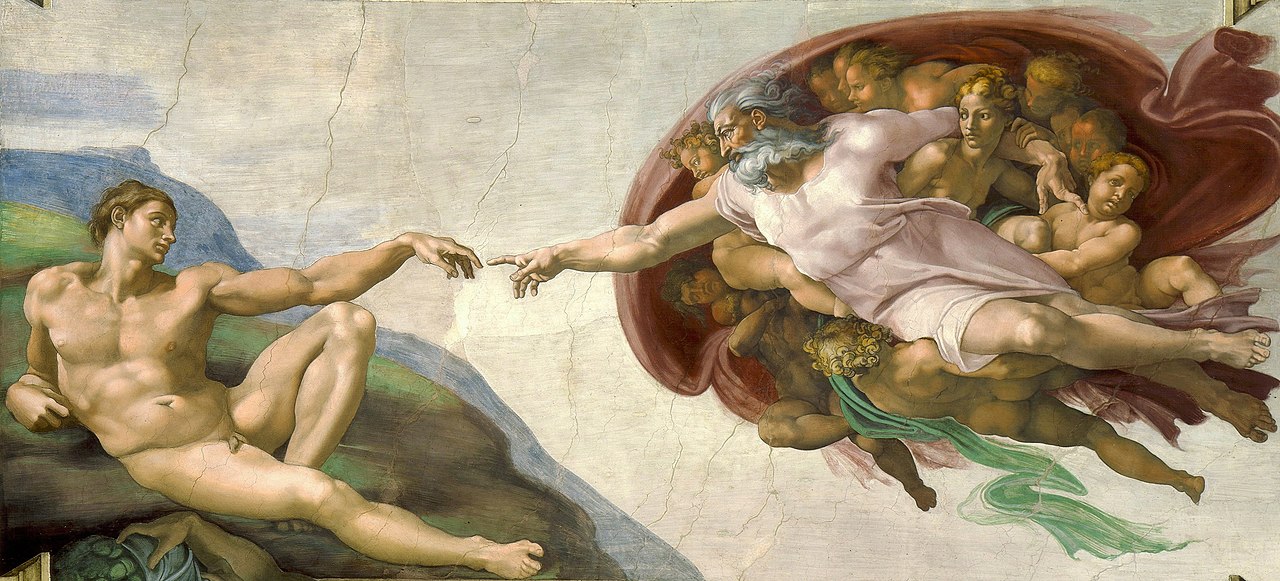

How to Understand a Poem or a Painting
When we look at a piece of art, a poem or a book, different feelings flow into our hearts such as love, reverence, awe, irritation, disgust, or outright hatred. What causes these feelings are myriads of meanings, memories, associations, and similar things that we experience in our lives. They give the meaning of art its profundity and complexity.
But is the meaning as simple as that, or is there more? Simply put how to understand a poem or an image and say something concrete about it?
Table of Contents
Understanding the beauty of art
When we look at a piece of art, its aesthetics captures our eye so we admire its beauty. If it's a picture, one of the first things that captures our attention is color. The contrast of colors blue, green, yellow, and how they intermix with each other affect us. Another thing that allures us is the theme. If it’s the high art, the theme is always something very valuable and important to that culture.

This can be seen in the creation of the Adam fresco painting on the Sistine Chapel ceiling. It is an iconic piece of the Renaissance high art. One of the things that makes this painting so important is its theme. According to the Bible, God created Adam in his own image. This meaningful interpretation and emotion is perfectly captured by this painting. No doubt that colors, artistic skills, and style played their part in making this picture a great piece of art, but it is the theme that brings all these things together. It is the context that gives the painting potential to rise above all.
Generally, it is the beauty and the morally elevating quality of a text or a picture that elevates its value, but beauty and morality are subjective- they cannot be quantified and evaluated in an objective manner. At most, you can have a consensus which is like democracy, but democracy cannot be used to truly evaluate the objective value of anything.
Is art subjective or objective
To counter this problem critics have employed different techniques and methods that try to be as objective as possible. For example, close reading forces the reader to read the text or see a picture multiple times to draw conclusions. Another method is to read a text word for word and look for the meaning of words in foreign and ancient languages. Some critics suggest that the psychological state and historical background of the author are a necessary requirement for understanding a piece of text or image. All these methods of criticism are helpful in their own way, but ultimately the meaning and judgment about a piece of art are in the hands of the audience.
Subjectivity in art
Readers give the poem or picture its ultimate and final meaning but readers are not a single continuous mass which can be evaluated by applying any mathematical formula. Readers are individuals with their own psychologies, experiences, environments, cultures, world views, and perspectives. Each individual is unique and the meaning he derives from a painting or a poem is also unique and very personal.
The intention of the author is often taken as a guiding principle for understanding a piece of art. Some people even try to dogmatize the meaning of art in this manner. But the interpretation ultimately lies with the reader. He can find beauty where the author intended ugliness. He can find connections and metaphors in shapes that were meaningless or of quite contrary meaning to the author.
Some examples of poems and paintings
For example, the shapes behind the figure of God in The creation of Adam painting on the Sistine Chapel ceiling appear to be an accurate picture of the human brain according to Frank Meshberger, a physician. On the contrary, others think that the red cloth around the figure of God is in the shape of the human uterus and the scarf hanging out could be the umbilical cord.
Similarly, the famous portrait of the Mona Lisa is a mystery to its viewers. There is no consensus on whether she is smiling or frowning. Is she happy or sad? There are only opinions about her demeanor, and the viewer has to draw his own conclusions.
In poetry, people draw their conclusions about the poems they like. There is no doubt that many poems have very specific meanings and there is not much space for different interpretations, but most poems use metaphors and other literary devices that leaves some vagueness. This allows readers to inject their own meaning into poetry and make it more personal.
For example, William Wordsworth's Daffodils is interpreted in many different ways by various critics. Especially this last stanza:
For oft, when on my couch I lie
In vacant or in pensive mood,
They flash upon that inward eye
Which is the bliss of solitude;
And then my heart with pleasure fills,
And dances with the daffodils.
A simple interpretation can be that the poet often has memories of beautiful daffodils. But the poem invokes the memories of the distant past like the memories of childhood in the reader. This often fills readers with pleasure similar to the pleasure one feels when thinking about daffodils.
Similarly, Edgar Allan Poe’s poem A Dream within A Dream may be referring to the poet’s wife but its language is general and captures the preciousness of life and how fragile and momentary its pleasures are. Its meaning is certainly different for each reader as he ponders on things that are precious for him in this life.
I stand amid the roar
Of a surf-tormented shore,
And I hold within my hand
Grains of the golden sand —
How few! yet how they creep
Through my fingers to the deep,
While I weep — while I weep!
O God! Can I not grasp
Them with a tighter clasp?
O God! can I not save
One from the pitiless wave?
Is all that we see or seem
But a dream within a dream?
Bukowski's bluebird is a mystery. Is the bluebird his creativity, his innocence, or something else? No one knows. But the poem is beautiful and everyone completes the meaning of bluebird with something of their own:
there’s a bluebird in my heart that
wants to get out
but I’m too tough for him,
I say, stay in there, I’m not going
to let anybody see
you.
In conclusion, the meaning of art is an organic thing. It is an ever-changing and evolving process. It is a spark of life that happens when a reader and a poem come face to face with each other. There is an interaction; a give and take of meaning. And only then a poem finds its right place in the heart of the reader.
Edited by cherrywine_stains



Comments